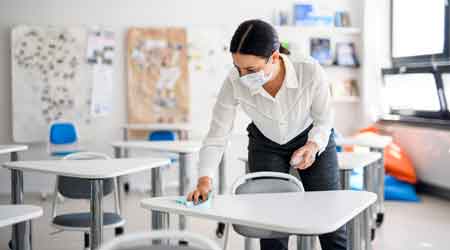
Pandemic Response: Microbes, Buildings, and Occupant Health
July 7, 2020
The coronavirus pandemic is changing nearly everything about life, and institutional and commercial facilities are no exception. In fact, given the amount of time many people spend working in and visiting indoor environments, buildings are under perhaps greater scrutiny than nearly any other component of life.
In response to the pandemic and this resulting scrutiny, facility managers are rethinking most everything they have learned about buildings. In the process, they are getting help from a range of experts who are diving deep into the role buildings play in the health – and potential sickness – of occupants and visitors. Among them are researchers at the University of Oregon’s Biology and the Built Environment (BioBE) Center, who study interactions between humans, buildings and microorganisms.
“Building managers also play a role” in shaping and modifying microbial communities within buildings, the researchers write in GreenBiz. “They can adjust the amount of outside air that is admitted and the frequency at which it is exchanged with indoor air. Other levers include humidification and dehumidification, and of course, cleaning products and practices.” They cite these examples:
Systems and materials. “Our recent research suggests that many natural systems, such as daylight and natural ventilation, don’t just reduce energy consumption and support human health — they also support more diverse indoor microbial ecosystems and reduce the abundance of potential pathogens. Similarly, natural unfinished wood surfaces have been shown to reduce the abundance of some viruses more quickly than other common indoor surfaces, such as stainless steel or plastic.”
Humidification. “Humidification is an important influence in indoor settings. Most indoor environments are very dry in the heating season. Dampness can produce mold, but very dry air is also a problem. It dehydrates our mucus membranes and skin and carries particles deeper into our respiratory tract, leaving us more susceptible to infection.”
The researchers have developed basic guidelines for enhanced building operations during the COVID-19 pandemic to reduce the risk of indoor viral transmission.
“These strategies can be applied in nearly every building,” they write. “Examples include introducing more outside air, increasing air exchange, maintaining relative humidity of 40 to 60 percent, opening windows to provide natural ventilation and flush out indoor spaces, increasing access to daylight, and implementing targeted disinfection techniques, such as UV-C light in health care settings.”
Dan Hounsell is editor of Facility Maintenance Decisions.
Next
Read next on FacilitiesNet












